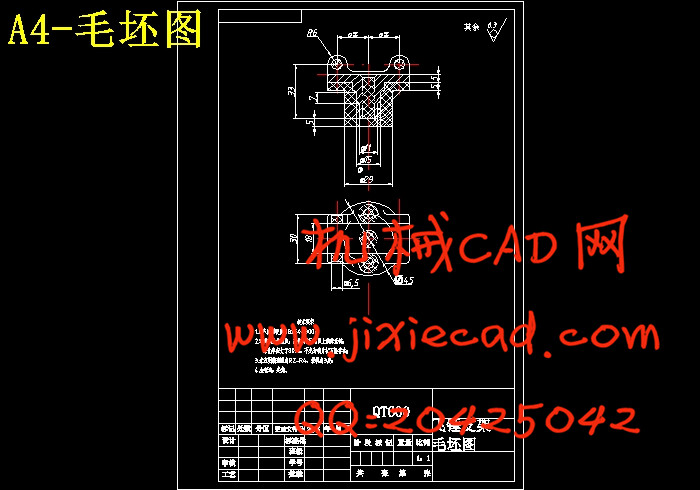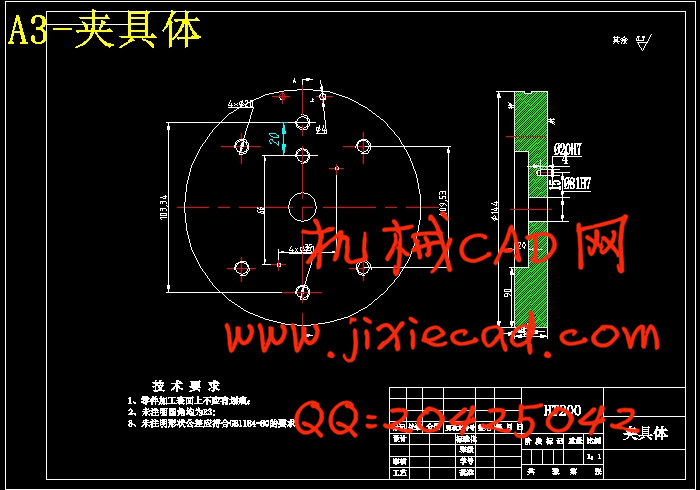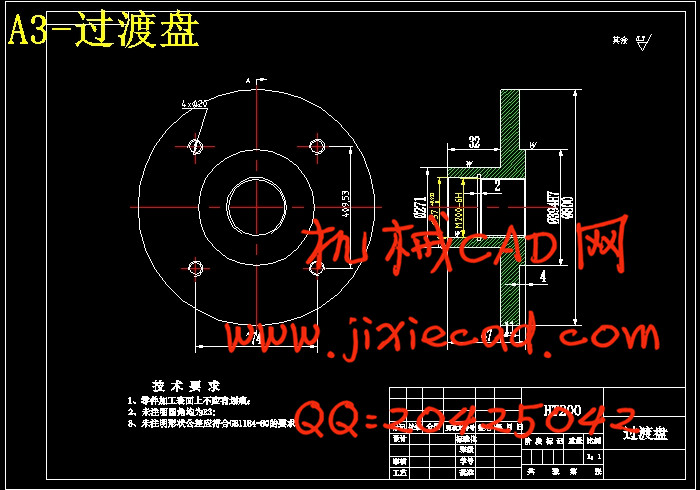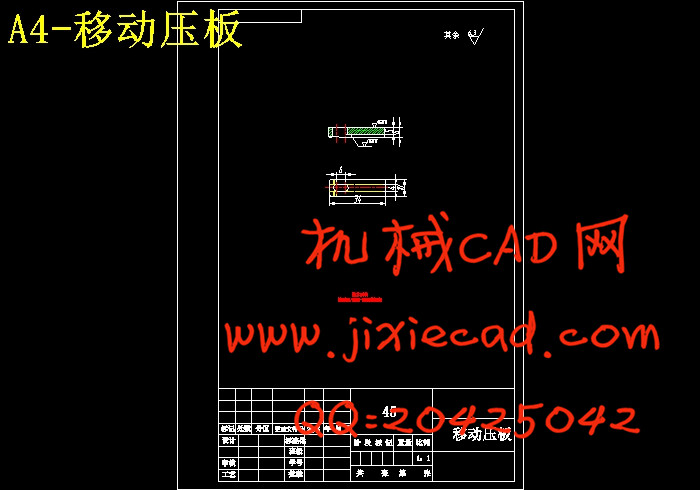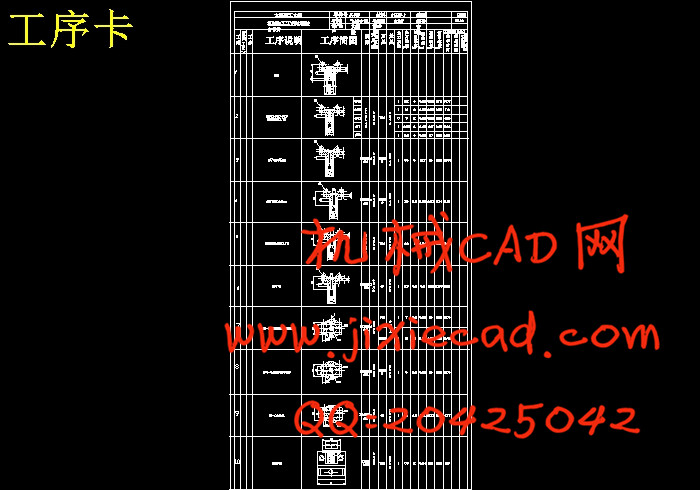设计简介
摘要
本设计是基于飞锤支架零件的加工工艺规程及一些工序的专用夹具设计,加工外圆及孔的车夹具设计。飞锤支架零件的主要加工表面是平面及孔系。一般来说,保证平面的加工精度要比保证孔系的加工精度容易。因此,本设计遵循先面后孔的原则。并将孔与平面的加工明确划分成粗加工和精加工阶段以保证孔系加工精度。基准选择以-中间拔叉的输入轴和输出轴的支承孔作为粗基准,以顶面与两个工艺孔作为精基准。主要加工工序安排是先以支承孔系定位加工出顶平面,再以顶平面与支承孔系定位加工出工艺孔。在后续工序中除个别工序外均用顶平面和工艺孔定位加工其他孔系与平面。支承孔系的加工采用的是坐标法镗孔。整个加工过程均选用机床。
关键词 飞锤支架,零件,加工工艺,专用夹具,设计
Abstract:
This design is the special fixture for machining technology for the flying hammer bracket parts and process design based on car fixture design, machining and hole. The main processing surface flying hammer bracket parts is the plane and a series of hole. In general, ensure the machining accuracy of plane than to ensure the accuracy of the processing easily. Therefore, the design follows the surface after the first hole principle. And the hole and the plane processing clearly divided into roughing and finishing stages to ensure machining precision. Datum selection to the bearing hole in the middle fork of the input shaft and output shaft as a rough benchmark, the top surface and the two holes as a precision technology base. The main process of machining technology is first to support hole positioning processing the top plane, and then the top plane and the series of supporting hole location hole processing technology. In addition to the follow-up processes are individual processes with the top plane positioning technology and other processing Kong and plane. Processing support holes using the coordinate boring. The whole process selection of machine tool.
Keywords:flying hammer bracket, parts, processing, special fixture, design
目 录
1.零件分析........................................................................................................................... 1
1.1 零件作用....................................................................................................................... 1
1.2 零件工艺分析............................................................................................................... 1
2.选择毛坯种类并确定制造方法.......................................................................................... 2
3.工艺规程的设计.................................................................................................................. 2
3.1基准的选择.................................................................................................................... 2
3.2制定工艺路线................................................................................................................ 2
3.3工艺路线确定................................................................................................................ 3
3.4 机械加工余量、工序尺寸及毛坯尺寸的确定........................................................... 4
4 加工外圆及孔车夹具设计.............................................................................................. 11
4.1 车床夹具设计要求说明.............................................................................................. 11
4.2车床夹具的设计要点.................................................................................................. 11
4.3 定位机构..................................................................................................................... 13
4.4夹紧机构...................................................................................................................... 13
4.5零件的车床夹具的加工误差分析.............................................................................. 13
4.6 确定夹具体结构尺寸和总体结构............................................................................. 14
4.7 零件的车床专用夹具简单使用说明......................................................................... 15
总 结................................................................................................................................. 16
致 谢................................................................................................................................. 17
参 考 文 献......................................................................................................................... 18
本设计是基于飞锤支架零件的加工工艺规程及一些工序的专用夹具设计,加工外圆及孔的车夹具设计。飞锤支架零件的主要加工表面是平面及孔系。一般来说,保证平面的加工精度要比保证孔系的加工精度容易。因此,本设计遵循先面后孔的原则。并将孔与平面的加工明确划分成粗加工和精加工阶段以保证孔系加工精度。基准选择以-中间拔叉的输入轴和输出轴的支承孔作为粗基准,以顶面与两个工艺孔作为精基准。主要加工工序安排是先以支承孔系定位加工出顶平面,再以顶平面与支承孔系定位加工出工艺孔。在后续工序中除个别工序外均用顶平面和工艺孔定位加工其他孔系与平面。支承孔系的加工采用的是坐标法镗孔。整个加工过程均选用机床。
关键词 飞锤支架,零件,加工工艺,专用夹具,设计
Abstract:
This design is the special fixture for machining technology for the flying hammer bracket parts and process design based on car fixture design, machining and hole. The main processing surface flying hammer bracket parts is the plane and a series of hole. In general, ensure the machining accuracy of plane than to ensure the accuracy of the processing easily. Therefore, the design follows the surface after the first hole principle. And the hole and the plane processing clearly divided into roughing and finishing stages to ensure machining precision. Datum selection to the bearing hole in the middle fork of the input shaft and output shaft as a rough benchmark, the top surface and the two holes as a precision technology base. The main process of machining technology is first to support hole positioning processing the top plane, and then the top plane and the series of supporting hole location hole processing technology. In addition to the follow-up processes are individual processes with the top plane positioning technology and other processing Kong and plane. Processing support holes using the coordinate boring. The whole process selection of machine tool.
Keywords:flying hammer bracket, parts, processing, special fixture, design
目 录
1.零件分析........................................................................................................................... 1
1.1 零件作用....................................................................................................................... 1
1.2 零件工艺分析............................................................................................................... 1
2.选择毛坯种类并确定制造方法.......................................................................................... 2
3.工艺规程的设计.................................................................................................................. 2
3.1基准的选择.................................................................................................................... 2
3.2制定工艺路线................................................................................................................ 2
3.3工艺路线确定................................................................................................................ 3
3.4 机械加工余量、工序尺寸及毛坯尺寸的确定........................................................... 4
4 加工外圆及孔车夹具设计.............................................................................................. 11
4.1 车床夹具设计要求说明.............................................................................................. 11
4.2车床夹具的设计要点.................................................................................................. 11
4.3 定位机构..................................................................................................................... 13
4.4夹紧机构...................................................................................................................... 13
4.5零件的车床夹具的加工误差分析.............................................................................. 13
4.6 确定夹具体结构尺寸和总体结构............................................................................. 14
4.7 零件的车床专用夹具简单使用说明......................................................................... 15
总 结................................................................................................................................. 16
致 谢................................................................................................................................. 17
参 考 文 献......................................................................................................................... 18



